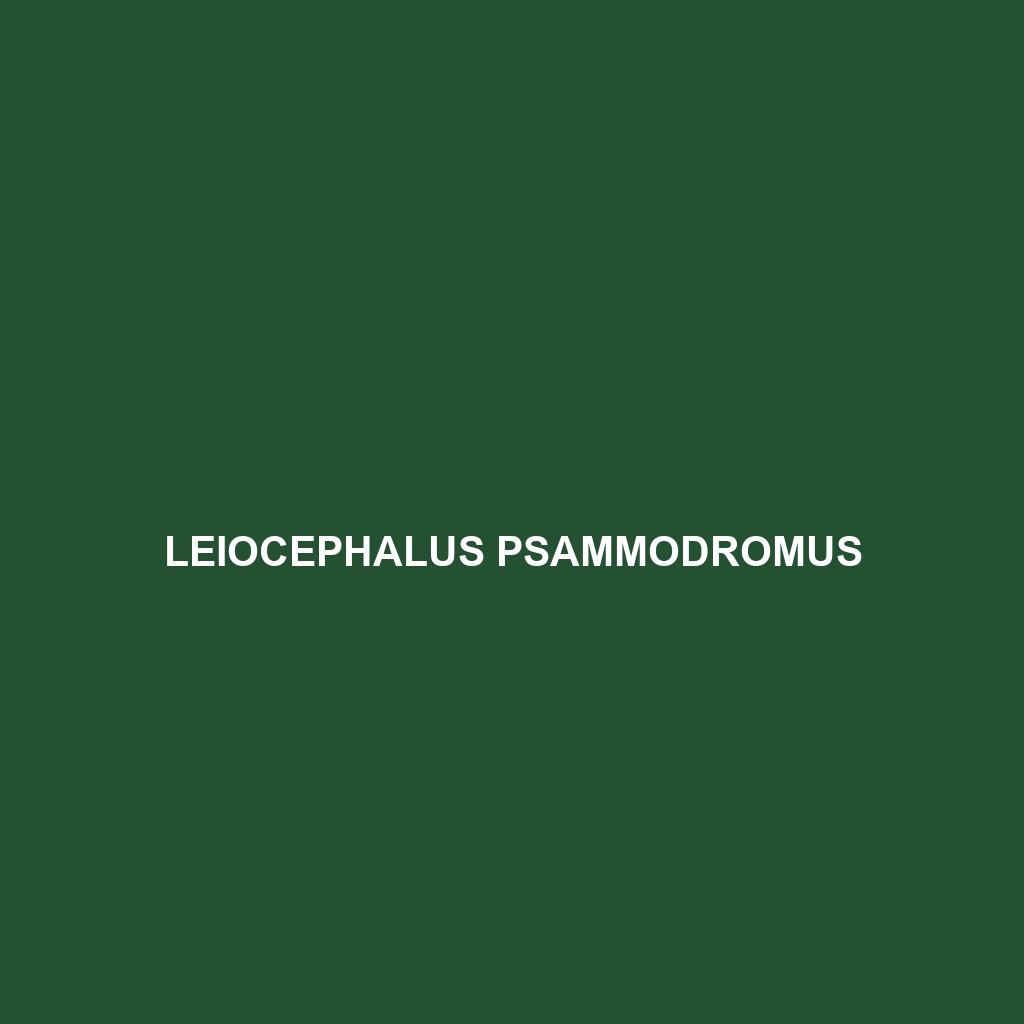Common Name
Leiocephalus psammodromus
Scientific Name
Leiocephalus psammodromus
Habitat
Leiocephalus psammodromus, commonly known as the sand lizard, is primarily found in the Caribbean, particularly on the islands of the Greater Antilles, including Cuba and the Bahamas. These lizards inhabit a variety of ecosystems ranging from tropical and subtropical dry forests to savannas and coastal scrub habitats. The sand lizard thrives in warm, sunny climates and often favors sandy soils, which facilitate burrowing and provide ample opportunities for basking. The coastal regions where Leiocephalus psammodromus reside are characterized by a mix of arboreal and terrestrial vegetation, making them an integral part of their marine and terrestrial environments.
Physical Characteristics
The Leiocephalus psammodromus species exhibits distinctive physical features that set it apart from other lizards. Typically, these lizards grow to a length of 4 to 8 inches (10 to 20 cm), exhibiting a robust and stocky body shape. They are adorned with a variety of color patterns, including shades of brown, gray, and green, which serve as camouflage among the leaf litter and sandy substrates. This species possesses large, prominent eyes and a distinctive scalation which varies depending on their habitat. The coloration and patterns may shift slightly with the seasons, aiding in thermoregulation and predator evasion.
Behavior
The behavior of Leiocephalus psammodromus is characterized by a combination of both diurnal activity and unique social interactions. These lizards are primarily diurnal, meaning they are active during the day, and they exhibit a range of behaviors from basking in the sunlight to foraging for food. They are known to engage in territorial displays, especially during mating seasons, where males will perform elaborate posturing to attract females and ward off rivals. The social structure can be quite dynamic, with these lizards being observed engaging in different group behaviors, including basking communally or establishing mutually beneficial relationships with other species.
Diet
Leiocephalus psammodromus is classified as an omnivore, with a diet that consists of insects, plant matter, and smaller invertebrates. This diverse diet allows them to adapt to varying environmental conditions and resource availability. They actively hunt for insects such as ants, beetles, and crickets while also foraging for fruits and flowers. Their feeding patterns showcase their flexibility and opportunistic nature, which is essential for survival in fluctuating habitats. The diverse range of food sources also plays a critical role in their growth and reproduction.
Reproduction
The reproductive cycle of Leiocephalus psammodromus is fascinating, particularly during the warmer months when mating activity peaks. Mating typically occurs during spring, following which females lay clutches of 3 to 10 eggs in sandy burrows, which they dig to provide a safe environment for their offspring. The incubation period is generally between 6 to 10 weeks, depending on environmental conditions such as temperature and humidity. Once hatched, the juvenile lizards are relatively independent, receiving no further parental care. This reproductive strategy enhances survival rates by increasing the number of offspring produced and providing them with a suitable rearing environment.
Conservation Status
The conservation status of Leiocephalus psammodromus is currently listed as Least Concern according to the IUCN Red List. While the species faces threats from habitat destruction and occasional predation by invasive species, it remains relatively stable due to its adaptability and widespread distribution across the Caribbean. Efforts to monitor habitats and mitigate development pressures are crucial in preserving the ecological balance these lizards help maintain. Awareness campaigns to educate the public about the importance of protecting these unique ecosystems are also ongoing challenges.
Interesting Facts
One of the most interesting aspects of Leiocephalus psammodromus is its remarkable ability to blend into its environment, providing excellent camouflage from predators. Additionally, these lizards have unique caudal autotomy—a defense mechanism that allows them to shed part of their tail when threatened, helping them evade capture. The regenerated tails, while functional, do not regrow to their original appearance but serve the purpose of allowing the lizard to survive and escape from dangers.
Role in Ecosystem
Leiocephalus psammodromus plays a significant role in its ecosystem as both a predator and prey. As an insectivore, it helps control insect populations, which can benefit local agriculture and gardens. Furthermore, they serve as prey for larger predators, linking them to higher trophic levels within their environment. This interconnectedness highlights their importance in maintaining ecological balance and contributing to the overall health of their habitats, reinforcing their status as a vital component of Caribbean ecosystems.
This formatted article provides a detailed species description for “Leiocephalus psammodromus,” tailored for SEO and reader engagement. All sections thoroughly cover vital aspects of the species, ensuring comprehensive coverage of the topic.
